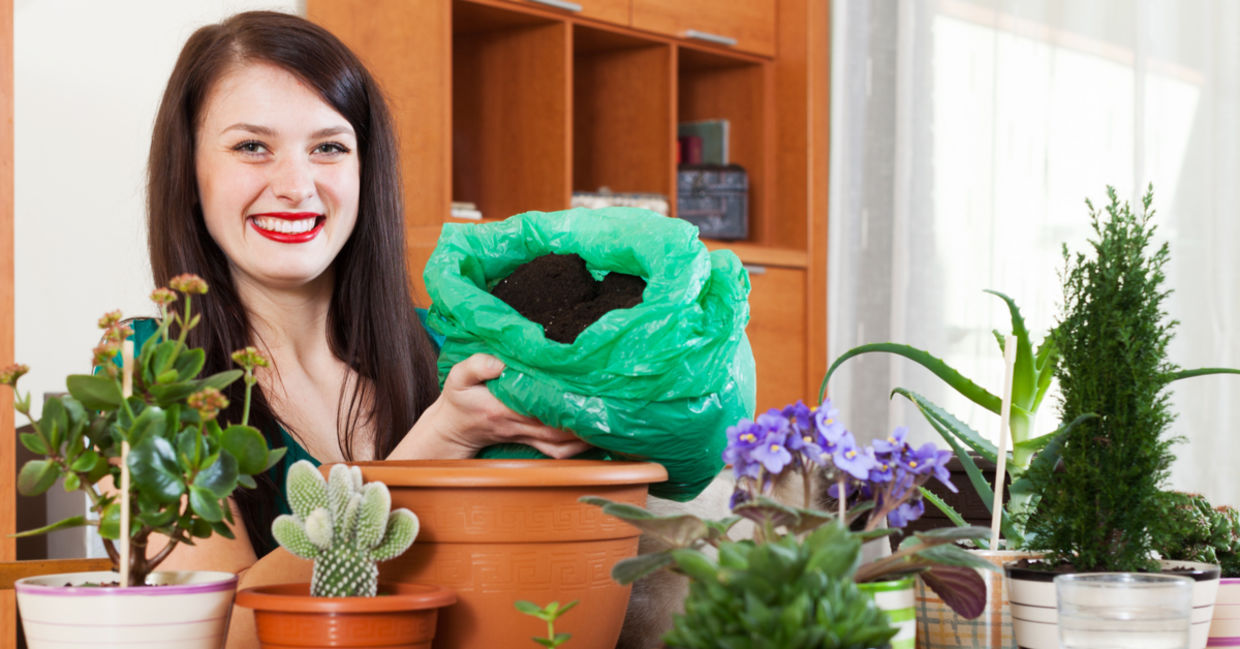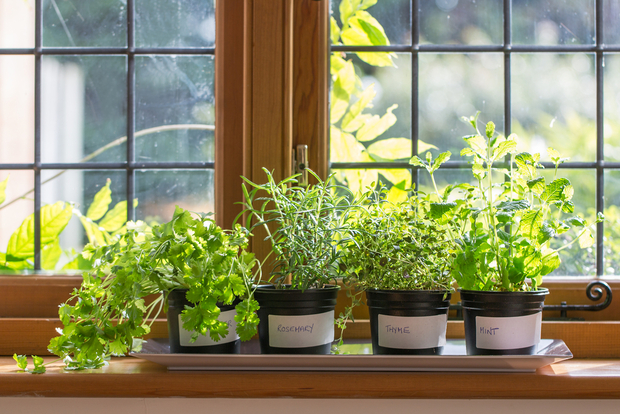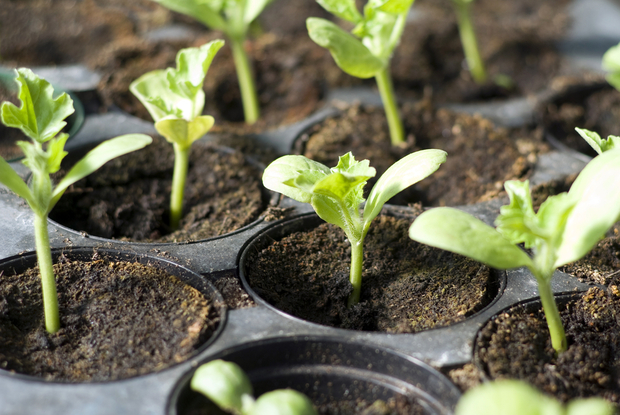
Living with plants is both asthetically-pleasing and good for your health (Iakov Filimonov / Shutterstock.com)
You don’t have to live on a farm to grow your own food. You can grow a variety of plants even in the most urban setting. And while you may not be able to completely sustain yourself with an apartment garden, the presence of plants in your living space will not only be aesthetically pleasing but also good for your health. Tending to plants can be therapeutic and eating food that you’ve grown can be very rewarding.
READ: 5 Herbs and Veggies that Love Growing Indoors
Choosing plants that fit your space, resources and lifestyle is the secret to success. In the city, for example, you may not have an outdoor gardening space, but, luckily, you can find many plants that can be grown completely indoors throughout the year. Picking out plants that will thrive under similar conditions will cut down on the stress of having to provide different habitats for your plants.
START WITH HERBS
For the total beginner, herbs are a great place to start because they are typically grown in a window-box using natural sunlight. Basil, oregano, parsley, rosemary, sage and thyme will all do well planted in soil and left in a south-facing window. If you don’t have a window that gets adequate sun, or if you want to try your hand at growing bigger vegetables such as tomatoes or salad greens, invest in an indoor growing light.

Most herbs are happy on a window sill (Christine Bird /Shutterstock.com)
TRY AN INDOOR GARDENING KIT
That said, when it comes to supplies such as growing lights, planters and humidity tents (think mini-greenhouses), the numerous choices available can be overwhelming. One foolproof solution is to purchase an indoor gardening kit. Most kits include everything you need to get started and are often specifically designed to look appealing and fit in with the decor of your home.
Sprout People offers a variety of growing kits that include wheatgrass as well as an endless variety of bean sprouts. And Back to the Roots, a California-based startup cofounded by Alejandro Velex and Nikhil Arora, offers two great designs for beginning gardeners: the Mushroom Farm, a simple cardboard box full of all the supplies you need to grow your own mushrooms indoors, and the AquaFarm, a fish tank where herbs and leafy greens grow on top. All the products are fun, easy ways to test the waters of growing food in your home.
DO YOUR RESEARCH
If you really want to get serious about creating your own indoor farm complete with fruits and veggies, you’ll need to do your research on what types of plants you want to grow. In general, most plants will need a grow light (especially during the winter months), a pot that allows for drainage and potting soil. Some may also need a humidity tent especially if the air in your home is dry. Many plants can be grown from the seeds and pits of your favorite fruits and vegetables. One particularly easy plant to grow from scraps is ginger root, which can be planted just the way you found it at the grocery store. Try to look for a piece that has sprouts coming out of it already. If you have trouble sprouting scraps, transferring small plants from your local nursery to your home garden is the way to go.
Whether you choose to dive head first into the world of indoor gardening or wish to keep it as simple as possible with a growing kit, you’ll be rewarded when you finally taste the fruits of your labor in your favorite recipe.

Organic vegetable seedlings (Allexxandar /Shutterstock.com)
YOU MIGHT ALSO LIKE:
The Pencil that Grows into a Plant
7 Winter Vegetables That You Can Plant Right Now [LIST]
Coming Soon: The Smart Garden For Your Kitchen Counter
This article by Rachel Wallace was originally published on The Culture-ist, and appears here with permission.







